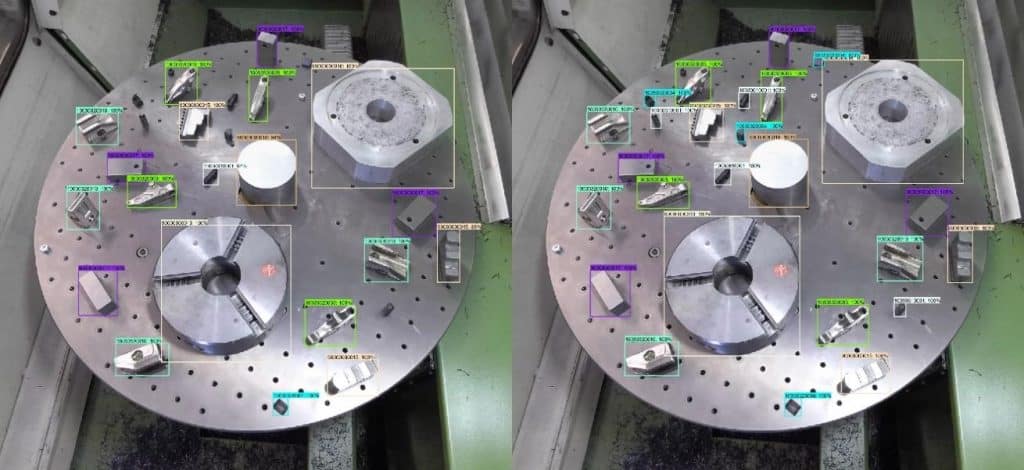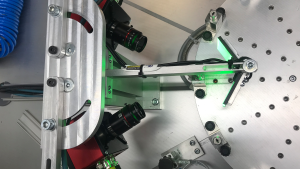Machine Visionas a solution to the shortage of skilled workers?
Solutions for medium-sized businesses
A camera in a CNC machine? This may sound a little strange at first. When you think of a CNC machine, you might first think of dirt, dust and lots of fast movements. Not the best environment for a camera. Not the best environment for Machine Vision either? That’s exactly what we wanted to find out.
We have had an evoVIU in one of our CNC machines at evopro for a few months now. Here’s our why, how and an insight into how the project is going so far.

Why?
CNC machines for the production of complex components in small batches are a major advantage of manufacturing in Germany today. However, errors often occur during processing due to incorrect operation of the complex machines.
Especially with small batch sizes and the associated frequent retooling, there is a high risk of collision, as the collision-relevant geometry inside the machine and the tool paths change with each setup process. To minimize the risk of collision, the machine is often operated at low feed speeds and the machine movements are monitored manually.
Together with the Ostbayerische Technische Hochschule Regensburg, a project has been and is being worked on with the aim of using an intelligent camera in the machining area of the CNC machine to record the actual situation and use it automatically as part of a collision simulation. The project to date has shown that the end users of CNC machines would see a great advantage in the integration of such collision monitoring. This is one of the reasons why this project is continuing towards implementation.
How?
The image acquisition process in the CNC machine is not trivial and requires robust hardware and good planning in advance. Suitable positioning and lighting must be found to avoid reflections and dark shadows. In addition, the camera system must be positioned in such a way that sufficient image quality with deep contrast and clear edges is guaranteed. One or more cameras with onboard intelligence are integrated into the CNC machine room. These are responsible for providing optimal images using adaptive HDR and multi-focus methods. Intelligent object recognition and pose estimation using artificial neural networks uses these images to identify and localize the objects in the CNC machine room. The AI models are trained with large amounts of training data that are procedurally generated from CAD models. After identifying and reconstructing the position of all objects in the CNC machine room, a three-dimensional digital model is created that can be used for a collision simulation based on the actual situation.
The project has only just begun and will run for another two years, but we are already very excited about the results. Who knows, maybe smart cameras will soon be an integral part of CNC machines.
Other contributions:

Release Update V5.4.0
The release update V5.4.0 is here! A major dashboard update, minor bug fixes and the integration of persistent variables are included.

Finally: The new VIU2 PoE camera is here!
The VIU2 PoE camera is here! You can find out why PoE is an important feature in this article.

Finally: The new VIU2 PoE camera is here!
The VIU2 PoE camera is here! You can find out why PoE is an important feature in this article.

